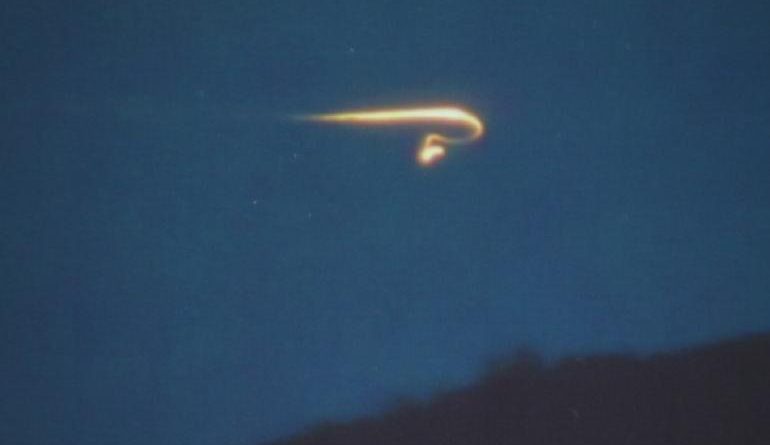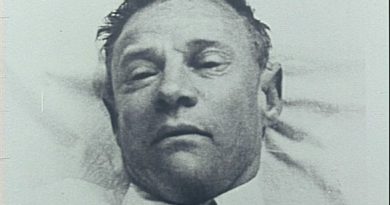Brown Mountain Lights captured on camera !
The Brown Mountain Lights are legendary UFOs (unidentified flying objects) in the North Carolina mountains. They’ve appeared to thousands of people over the past 100 years, yet like most UFOs, the Brown Mountain Lights are anything but predictable. App State physicist Daniel Caton and his team almost gave up after attempting to film the lights over the past few years.
Earlier this year, their dry spell ended and the lights finally appeared on his camera in vivid fashion. The Brown Mountain Lights are a series of ghost lights reported near Brown Mountain in North Carolina. The lights can be seen from the Blue Ridge Parkway at mile posts 310 (Brown Mountain Light overlook) and 301 (Green Mountain overlook) and from the Brown Mountain Overlook on NC Highway 181 between Morganton, NC and Linville, NC. Additionally, good sightings of the Lights have been reported from the top of Table Rock, outside of Morganton, NC. One of the best vantage points, Wiseman’s View, is about 4 miles from Linville Falls, NC. There is also a Brown Mountain Overlook on North Carolina Highway 181 that was recently improved with help from the city of Morganton for the purpose of attracting those who visit the area to see the lights. The best time of year to see them is reportedly September through early December
This latest footage of the phenomenon was captured on camera by Appalachian State University physicist Daniel Caton and his team after several years of failed attempts. The lights are visible between 0:52 and 01:02 in the video below.
Here is his video description, with the time stamps of the appearances, and his raw, unedited footage:
“Dusk-to-dawn 30-second images. Cloudy early, then clear with stars rising at angles. WEIRD LIGHTS FROM 0:52 – 1:02 IN. SEEM OUT OF FOCUS SO NEARBY. “
To get the above footage, Daniel Caton and his App State scientific team set up two cameras on a house overlooking the Brown Mountains and wirelessly streamed the footage to their lab back at Appalachian State University. For the past 4 years, they reviewed the footage every day from the previous night without seeing anything that couldn’t be easily explained (shooting stars, car lights, camera flares, etc).
If something shows up on one camera but not the other, the team assumes they just saw a lens flare or some other electronic anomaly. The footage above, for the first time, captured the same strange lights on both cameras, at the same exact time. After the discovery, Caton and his colleagues dissected the images and couldn’t come up with any logical explanation for the light to be there.
If you’ve never heard of the ‘Brown Mountain Lights’ before, this short (fairly dated) documentary presents a decent overview:
The Brown Mountain Lights have been observed for centuries, and multiple legends have arisen around the phenomenon. The Cherokee were aware of the lights, and according to some accounts claimed that the lights were the souls of Cherokee women searching for their men who had died in a great battle between the Cherokee and the Catawba that took place on Brown Mountain. Another legend says that the lights are the the ghostly echoes of lights that appeared during a search for a murdered woman in the 19th century.
One thing is certain, the lights do exist. They have been seen from earliest times. They appear at irregular intervals over the top of Brown Mountain – a long, low mountain in the foothills of the Blue Ridge. They move erratically up and down, visible at a distance, but vanishing as one climbs the mountain. From the Wiseman’s View on Linville Mountain the lights can be seen well. They at first appear to be about twice the size of a star as they come over Brown Mountain. Sometimes they have a reddish or blue cast. On dark nights they pop up so thick and fast it’s impossible to count them.
Among the scientific investigations which have undertaken from time to time to explain the lights have been two conducted by the U.S. Geological Survey. The first was made in 1913 when the conclusion was reached that the lights were locomotive headlights from the Catawba Valley south of Brown Mountain. However, three years later in 1916 a great flood that swept through the Catawba Valley knocked out the railroad bridges. It was weeks before the right-of-way could be repaired and the locomotives could once again enter the valley. Roads were also washed out and power lines were down.
Source: Charlotte Stories



